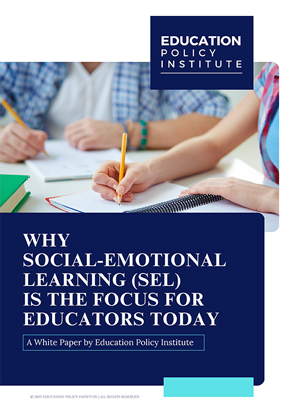“Technology can become the wings that will allow the educational world to fly farther and faster than ever before - if we allow it”
- Jenny Arledge
Technology has always acted as a catalyst, propelling change within the education sector. It has undeniably left an indelible mark on our learning journey from the revolutionary introduction of the printing press to the soaring growth of online learning, where virtual wings carried us to new educational heights.
By 2025, we expect to witness 75 billion connected devices in the world, which is three times that of 2019 (Source: Statista). As we journey into the future, it becomes evident that technology will persistently change the education landscape in diverse ways. In this article, we will delve into several significant emerging trends in education technology that are expected to influence the education sector at present and in the future.
Technology Trends Reshaping the Education Sector
The coming years will witness the emergence of more powerful and useful trends in the education technology space, resulting in the creation of more comprehensive and effective learning environments.
Nano Learning
Nano-learning, also referred to as bite-sized learning, is an ongoing learning approach that enables individuals to acquire knowledge without dedicating extensive periods of time. It involves condensed learning modules that encompass valuable information. An illustration of this would be a brief two-minute discussion with an expert, which can effectively dispel doubts and enhance the learner's knowledge. Many people drop out of learning due to time constraints and financial barriers. Nano-learning solves these problems by offering flexible schedules and cost-effective options. It allows individuals to fit new knowledge into their busy lives and access pre-recorded courses without the need for expensive resources. This makes nano-learning a practical choice for lifelong learning.
Nano-learning, with its progressive and convenient online format, gained popularity during the COVID-19 pandemic. It offered short lessons for self-improvement and allowed time-efficient exploration of new topics. Personalized learning and optimized organization made it easier to handle vast amounts of information. In the future, more individuals will gravitate toward nano-learning as it proves to be indispensable in the realm of education.
Gamification
Many educational institutions have embraced the trend of gamifying learning, recognizing its ability to unlock the doors of knowledge and transform students into eager explorers. By infusing game design elements into the educational setting, they create a vibrant tapestry where learning becomes an exhilarating journey, akin to a captivating treasure hunt. Students put on their thinking caps and embark on an exciting quest, diving deep into the world of understanding, tackling challenges, and uncovering valuable knowledge along the way. Just like a skilled chef who combines ingredients to create a delicious dish, gamifying learning mixes elements together to create an engaging formula that grabs student's attention and sparks their thirst for knowledge.
Automated assessments
Automated assessment (AA) is a tool that enables the automatic checking of source code, offering a fresh perspective on learning. Recent research shows that the adoption of artificial intelligence (AI) in educational institutions and schools for automated assessments has significantly increased. In 2022, 25% of organizations reported successful investment and deployment of AI, compared to 14% in 2019. AA benefits various areas: Students receive immediate feedback on the correctness of their programs, allowing them to work at their own pace. Teachers save valuable time by avoiding the tedious task of manually checking assignments and identifying and explaining repetitive errors. AA enables the teaching of large student groups without placing excessive demands on teachers, making it particularly useful in Massive Open Online Courses (MOOCs). The learning process becomes more efficient as errors are tracked, enabling the fragmentation, quantification, and description of individual components of the process, such as problematic topics, specific examples, and the number of attempts required for mastery.
Cloud Computing
Cloud computing has become an indispensable tool for enterprises across various industries, including education. Its advantages are far-reaching and transformative. By hosting educational resources on cloud platforms, physical textbooks are replaced, granting easy access to students and teachers. Course materials can be uploaded remotely, eliminating concerns about storage space. The technology enhances collaboration, enabling real-time cooperation regardless of geographical location. This benefits students unable to attend physical classes, allowing them to keep pace with their peers. Teachers can also collaborate online, efficiently sharing lesson plans and feedback with colleagues from different departments and schools. Cloud-based learning systems offer a means for marginalized students to acquire education and necessary tools. It streamlines processes, saving time and effort for both faculty and students.
Costs are reduced as cloud-based applications utilize cloud processing power, minimizing the need for expensive hardware. Moreover, the cloud ensures data security by storing information on secure servers, eliminating the need for physical storage and providing backups. The global cloud computing market in education reached around US$2.2 billion in 2020 and is expected to grow to US$8.7 billion by 2027. This demonstrates the value and potential of cloud technology in transforming educational systems. Educational institutions should seize this opportunity to embrace these modern tools, like a compass guiding them toward a brighter future.
Mobile Learning
In recent years, mobile learning has experienced significant growth. This growth can be attributed not only to the rise of smartphones and handheld devices but also to the increasing dependency individuals have on technology. Today's students and employees are actively juggling multiple jobs, and remote settings are becoming increasingly comfortable for them. With mobile learning, they have the freedom to choose when and where to engage in modules or lessons. It serves as the perfect platform for learning on the go, whether you are a student or an employee. The future of education lies in mobile learning, and one of the reasons for its success is its flexibility. Transforming the training materials into online resources accessible through smartphones no longer needs to be a lengthy and exhausting process. Numerous learning tools have already emerged in the market, specifically designed to simplify and streamline this process, making it easy and convenient.
End Notes…
Educators must stay relevant and effective by keeping pace with the rapidly evolving future of education. Emerging trends such as nano learning, gamification, personalized learning, mobile learning, and cloud computing have demonstrated their transformative potential in shaping the educational landscape. By embracing and integrating these trends into their teaching practices, educators can prepare students for the future of work and ensure their success in an ever-changing world.





